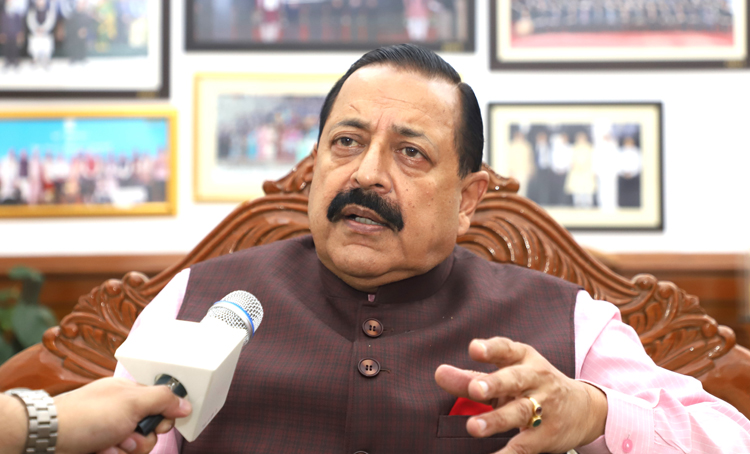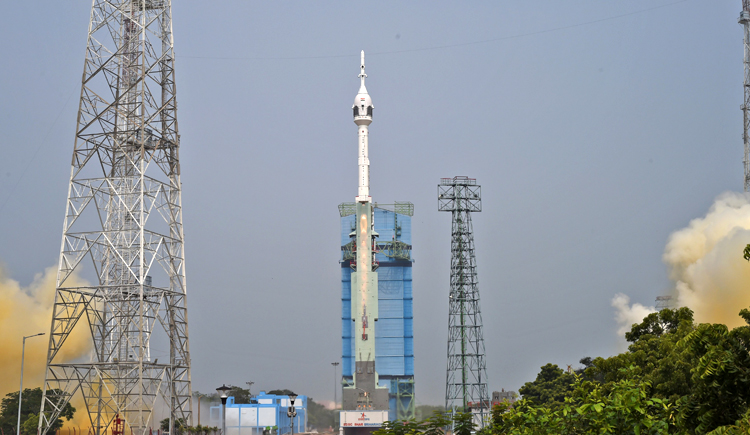INDIAN ARMED FORCES CHIEFS ON OUR RELENTLESS AND FOCUSED PUBLISHING EFFORTS

The insightful articles, inspiring narrations and analytical perspectives presented by the Editorial Team, establish an alluring connect with the reader. My compliments and best wishes to SP Guide Publications.

"Over the past 60 years, the growth of SP Guide Publications has mirrored the rising stature of Indian Navy. Its well-researched and informative magazines on Defence and Aerospace sector have served to shape an educated opinion of our military personnel, policy makers and the public alike. I wish SP's Publication team continued success, fair winds and following seas in all future endeavour!"

Since, its inception in 1964, SP Guide Publications has consistently demonstrated commitment to high-quality journalism in the aerospace and defence sectors, earning a well-deserved reputation as Asia's largest media house in this domain. I wish SP Guide Publications continued success in its pursuit of excellence.
- Indian Air Force Aims for Full Indigenous Inventory by 2047 — Air Chief Marshal A.P. Singh
- Rajnath Singh assumes charge as Defence Minister for the second consecutive term
- Interim Defence Budget 2024-25 — An Analysis
- Union Defence budget 2024
- Prime Minister Modi Flies in the LCA Tejas
- New Chapter in India-Italy Defence Ties
- Airpower beyond Boundaries
Test flight success of Abort Mission-1 (TV-D1) heralds successive sequential trial flights before the final “Gaganyaan” launch, says Union Minister of State for Space, Dr Jitendra Singh
Ever since Prime Minister Narendra Modi "unlocked" the Space sector from the self-imposed regulations and shackles of the past, Dr. Jitendra Singh said, the mood is upbeat at ISRO and the industry as well as private participants are vying with each other to collaborate in Space projects
Today's exercise is the first step in the ISRO journey to launch a Crewed Human Spacecraft through the “Gaganyaan” mission: Dr Jitendra Singh

Test flight success of Abort Mission-1 (TV-D1) this morning heralds successive sequential trial flights before the final “Gaganyaan” launch, said Union Minister of State (Independent Charge) Science & Technology; MoS PMO, Personnel, Public Grievances, Pensions, Atomic Energy and Space, Dr Jitendra Singh in his first response soon after the entire exercise was accomplished as expected, with a single engine rocket carrying an early depressurised version of "Gaganyaan" Crew Module (CM) to an altitude of around 17 Kilometre followed by final descent using a parachute for its splash down.
The Minister of State for Space said, this is a critical step in the ISRO journey to launch a crewed human spacecraft through “Gaganyaan” mission. Today's exercise tested the performance of the Crew Escape System on the Crew Module of the Gaganyaan mission, he said. Basically, it tested the safety mechanism that will allow the crew of the "Gaganyaan" mission to escape the spacecraft in case the mission is aborted due to a malfunction, he added.

Coming less than two months after the successful Moon landing by Chandrayaan-3, Dr Jitendra Singh said, today's event has paved the way for a series of tests of systems and procedures with the aim to ultimately launch an Indian astronaut on Space, possibly around the year 2025.
Ever since Prime Minister Narendra Modi "unlocked" the Space sector from the self-imposed regulations and shackles of the past, Dr. Jitendra Singh said, the mood is upbeat at ISRO and the industry as well as private participants are vying with each other to collaborate in Space projects. This has not only given a boost but also contributed huge value addition both in terms of knowledge as well as finances and an evidence of this is that within a short span of over three years the number of successful StartUps has gone up from less than 5 to over 150.
Citing the adage, “Well Begun is Half Done”, Dr Jitendra Singh said, the Test Vehicle Abort Mission-1 (TV-D1) accomplished today demonstrated the crew escape of the “Gaganyaan” project.
Dr Jitendra Singh said, this test flight will set the stage for the remaining qualification tests and unmanned missions, leading to the first Gaganyaan mission with Indian astronauts.
The Minister said, human safety is of paramount importance in the “Gaganyaan” mission. Crew Module (CM) is the habitable space with Earth like environment in space for the crew, while Service Module (SM) will be used for providing necessary support to CM while in orbit.

Under the able guidance of PM Modi, India's Space programme is aiming for its first manned mission to Space and later landing the first Indian astronaut to the Moon, he added.
Dr Jitendra Singh said, building on the success of Indian Space initiatives which got a boost in the last 4 to 5 years, including the recent Chandrayan-3 and Aditya L1 Missions, Prime Minister Modi has directed that India should now aim for new and ambitious goals, including setting up the 'Bharatiya Antariksha Station' (Indian Space Station) by 2035 and sending first Indian to the Moon by 2040.
Dr Jitendra Singh said the world today acknowledges India's quantum leap in India's Space prowess, spurred by unlocking of the sector by the Prime Minister Narendra Modi.





